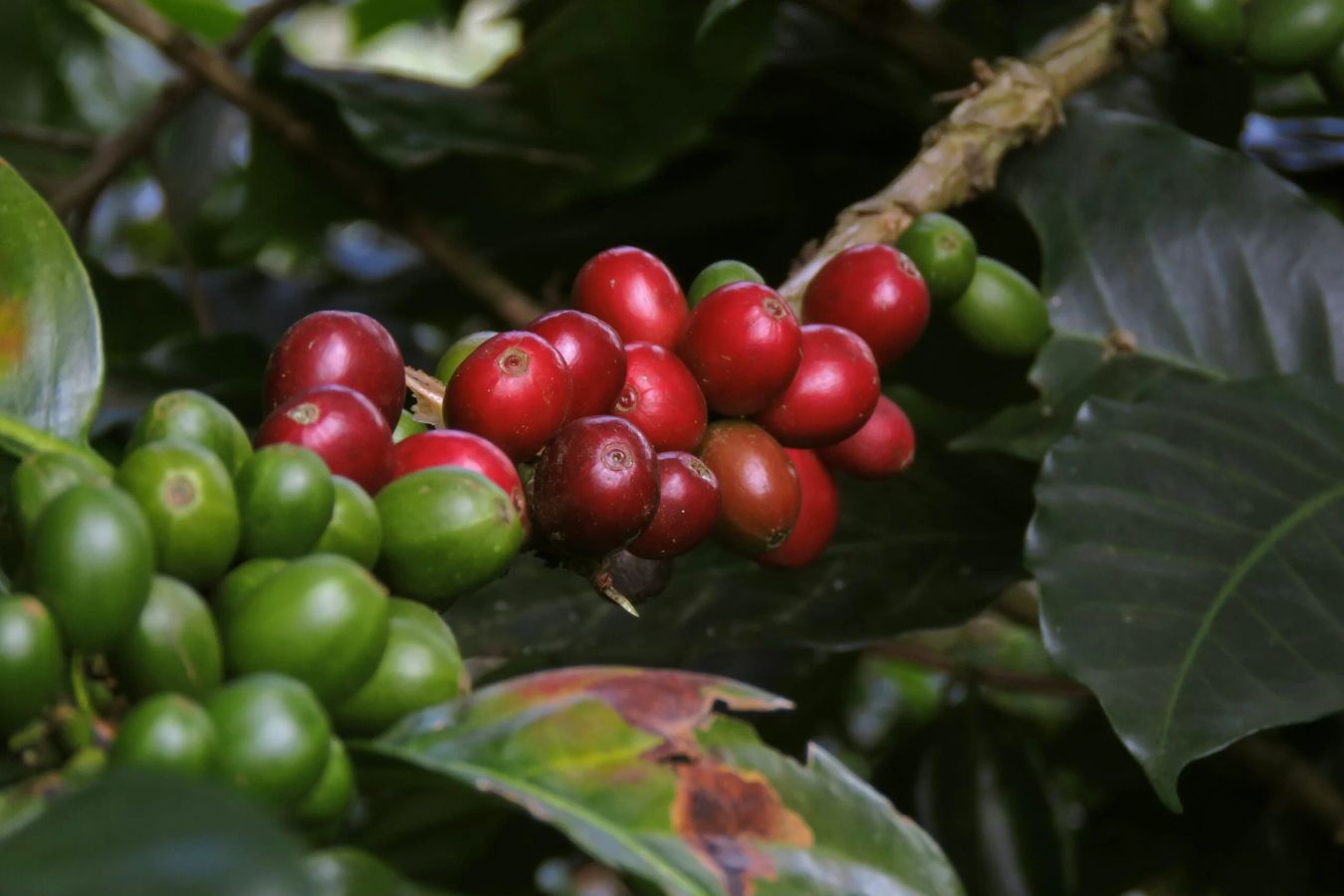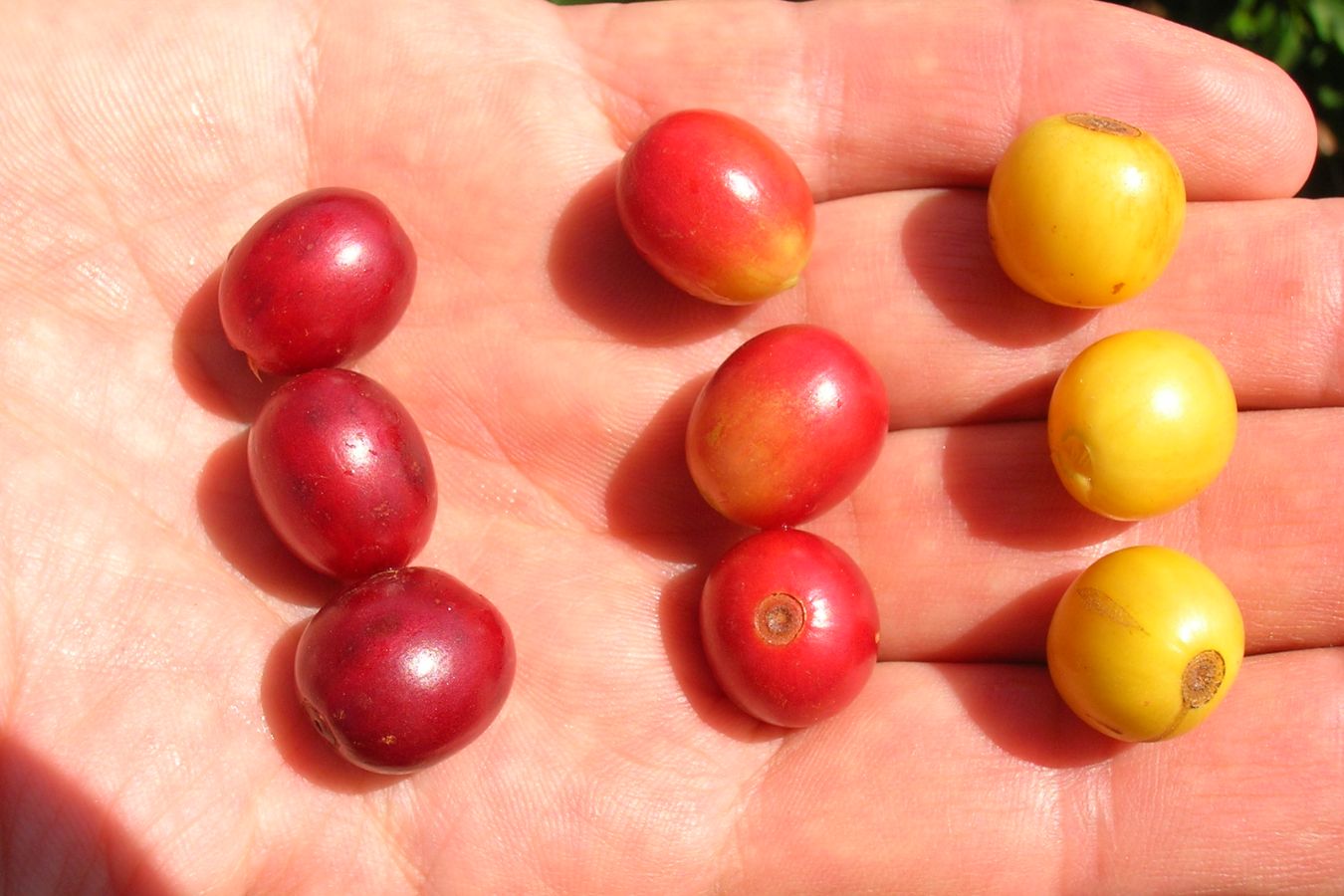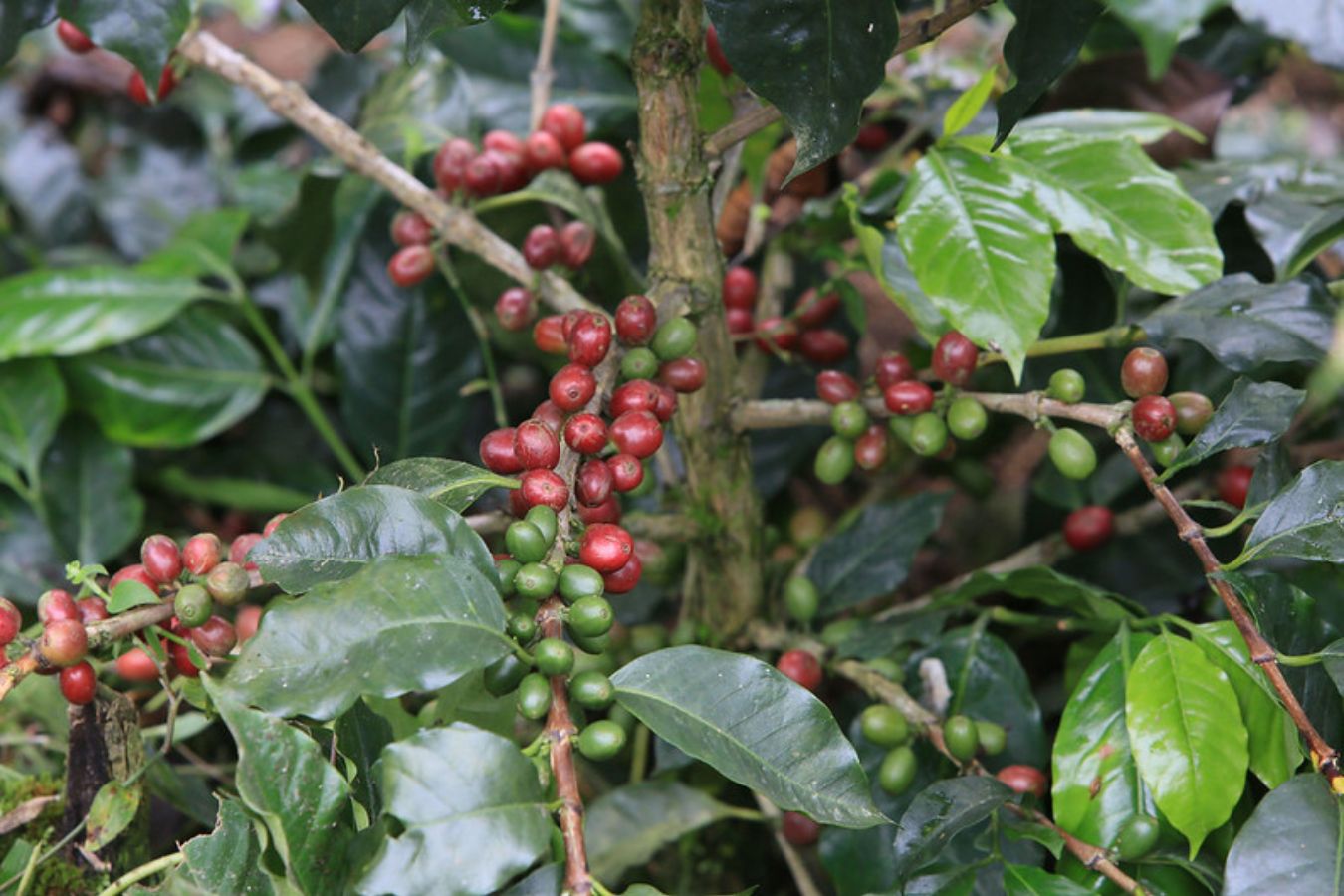
Types of coffee beans and their characteristic part 1: BASTIAN, BOURBON, CASTILLO, CATIMOR VÀ SARCHIMOR, CATUAI, CATURRA, ETHIOPIAN HEIRLOOM, GEISHA, IHCAFE 90
According to data, there are more than 125 known types of coffee in the world today. Only two species, Arabica and Robusta, have been commercially promoted. Arabica coffee – coffee varietals produced at high altitudes, which contain less caffeine but have a fuller, more delicate, and distinctive flavor than Robusta – is only used in the Specialty Coffee sector because of its potential flavor. a large number of
When it comes to coffee variations, numerous old varieties and new hybrids have been developed, all of which produce exceptional productivity and quality. Join Helena to learn about uncommon coffee types with promise for quality and flavor.
Bastian
Exceptional
Productivity is high.
Disease resistance: Good Batian, named after a Kenyan high peak, is the most recent type cultivated in Kenya.
The Batian cultivar, introduced in 2010, impresses with its resilience to both leaf rust and coffee leaf rot and its exceptional flavour quality. In the future years, this variety is predicted to gain popularity in Kenya, potentially becoming the most common variety on all Kenyan farms.
Bourbon
Exceptional
Productivity is average.

Susceptibility to disease resistance
This is a Typica genus spontaneous mutation. After random mutation, the French grew the Typica tree on Reunion Island (then known as Il Bourbon).
Because this variety yields more than Typica, it is commonly used. Bourbon-like coffee beans come in various colors, including yellow, red, and pink. Bourbon varietals have a complicated acidity balance.
Castillo
Castillo is named after researcher Jamie Castillo, who assisted Cenicafe, Colombia’s Center for Coffee Research, in developing the coffee variety in 2005.
Castillo was created to improve the ‘Colombia’ type, which is rust-resistant (Roya) and has swiftly become Colombia’s most popular coffee. High-density planting is possible because of the excellent yields, resilience to rust and other joint diseases, and short stems.
Sarchimor And Catimor
high-quality
Productivity is high.

Disease resistance is defined as:
Backcrosses include Catimor and Sarchimor, for example. This variety has traits and DNA from various animals (arabica and Robusta).
Although these types have a poorer coffee quality than others, they are critical for coffee farmers afflicted by coffee leaf rot and cherries. obtain a high
Sarchimor is a cross between Villa Sarchi and Timor, while Catimor is between Timor and Caturra.
Catuai
high-quality
Productivity is average.
Disease susceptibility: a person’s susceptibility to disease.
Catuai is a hybrid between Caturra and Mundo Novo developed by the Instituto Agronomico do Campinas in Brazil.
The name “very nice” derives from the local Tupi-Guarani language of Brazil. It is a high-yielding, densely cultivated crop that accounts for over half of Brazil’s coffee production.
A hybrid between Mundo Novo and Caturra has produced a high-yielding cultivar. The side branches of this tree are generally exceptionally near to the main components because it is a little tree. This tree’s fruit does not fall readily, making it ideal for regions with a lot of wind or rain. Catuai, too, requires proper care and fertilization.
Caturra
high-quality
Productivity is average.

Disease susceptibility: a person’s susceptibility to disease.
Caturra is a Bourbon spontaneous mutation discovered in Brazil in 1937, and it is thought to be the first natural mutation ever found.
Leaf rust is a severe problem for this tree. The quality of the product improves with altitude, but the yield decreases. Due to the low stems and close spacing of branches, the type matures faster than classic varieties like Bourbon and Typica, yielding better results. Caturra thrives in various habitats, although it thrives best at altitudes of 600 to 1,500 meters with an annual rainfall of 2500 to 3500 millimetres.
Ethiopian Heritage
Exceptional
Productivity is average.
Disease resistance is defined as:
Ethiopia Indigenous heritage variations emerging from crossbreeding across species and varieties, rather than being produced from a single breed, are referred to as heirloom.
Coffee is classified as “Ethiopia Landrace” in a broader sense. A landrace is a historically domesticated, regionally adapted form of an animal or plant species that have evolved due to agriculture and colonialism’s natural and cultural environments. Pastoral, and due to the species’ isolation from other populations.
Geisha
Exceptional
Productivity is average.

Resistance to Disease: Geisha is a high-quality cultivar produced throughout Central America and is named after the Ethiopian town of Geisha, where the seed originated.
This type has good quality but low yield, necessitating meticulous cultivation. As a result, it is frequently sold at a very high price. In most growing places, geishas have been proved to be disease-resistant.
90 Ihcafe
Quality is poor.
Productivity is high.
Resistance to Disease:
CAFE 90 is a hybrid between Caturra and Sarchimor developed in the 1990s by the Coffee Research Institute of Honduras and tailored to growing circumstances in Honduras.